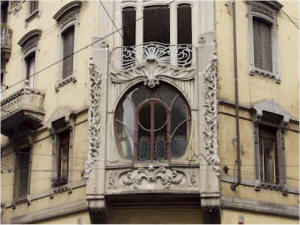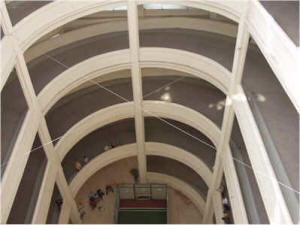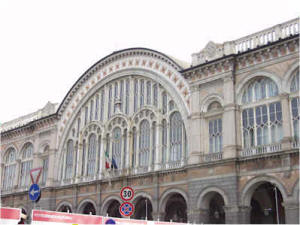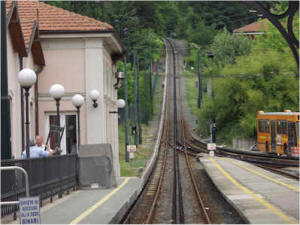| Turin 16th - 19th
June 2005 Researched and led by Sue Hayton |
|
| Turin is a city of about a million people set close to the Alps but on the plain of the River Po. It was Italy’s first capital after unification but is better known today as the capital of Piedmont. We started our visit to Turin with a walk in the historic city centre which included a visit to an unusual gas museum and archive. No matter what the weather we kept cool under the famed 14 kilometres of arcades. As well as some fine commercial buildings we also saw some examples of Italian art nouveau, ‘il stilo liberty’. Our walk along the River Po included riverside warehouses and views of the various bridges as well as the site of the 1884 Exhibition held in the city. One of the remains there is a replica mediaeval village once representative of villages in the Alps. |  |
| On Saturday we looked at Turin, the ‘motor city’. Many famous car makers started work in the city, including Fiat, Bertone and Lancia. In particular, we traced the progression of the FIAT company from their first works on the Corso Dante, to the kilometre-long Lingotto works with a car track on the roof, as featured in ‘The Italian Job’. Finally we looked at the 1930s Mirafiori factory where production is still carried on and we visited the renowned Carlo Biscaretti di Ruffia Car Museum housed in an eclectic 60s structure. The museum contains examples of cars from the earliest steam-powered vehicles to the modern mass production models, from successful racing cars to the latest products of ecological research. |  |
| We visited the city’s market area to join the local population buying fresh food in market buildings dating from the early 20th century. Later we saw the remains of the city’s gas works, on a site dating back to the early 19th century. We also had the chance to view some of the other transport remains in the city such as railway stations and tram depots. As Turin is hosting the Winter Olympics in 2006, much of the transport system will be renovated so we were able to see stations before they are modernised. |  |
| On Sunday we ascended an 1880s funicular railway now refurbished as a rack railway to take us to Superga. This afforded splendid views of the city as well as the foothills of the Alps. The church here houses the tombs of the Savoy royal family. After our return to the city centre we visited the Mole, the tallest structure in the city, where those who were not too faint-hearted took the glass lift through the building to an observation platform above the city centre for another alternative view of the city. The rest of Sunday left us free to wander further in the city, but some took the opportunity to look at the Italian Cinema Museum which is also housed in the Mole as Turin was also an early film centre. |  |
| Words and images Copyright © Sue Hayton 2004 | |
